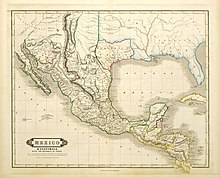Prideaux John Selby
Prideaux John Selby | |
|---|---|
| Born | 23 July 1788 Alnwick, Northumberland, England |
| Died | 27 March 1867 (aged 78) Bamburgh, Northumberland, England |
| Occupation | ornithologist, botanist, artist |
| Nationality | British |
Prideaux John Selby FRSE FLS (23 July 1788 – 27 March 1867) was an English ornithologist, botanist and natural history artist.
Selby was born in Bondgate Street in Alnwick in Northumberland, the eldest son of George Selby of Beal and Twizell (d.1804),[1] and his wife, Margaret Cook. He was educated at Durham School.[2]
He studied at University College, Oxford. He succeeded in 1804 to the family estates at Beal, and added to the landholdings there at a cost of some £14000 in about 1840. He sold the Beal estate amounting to 1,450 acres (590 ha) in 1850 for £47000 (£4,937,000 at today's prices).
He died at Twizell House and was buried in Bamburgh churchyard.
In 1810 he married Lewis Tabitha Mitford (1782-1859) daughter of Bertram Osbaldeston Mitford (1748-1800) of Dennet's Hall in Leicester.[3] They had three daughters.
Selby is best known for his Illustrations of British Ornithology (1821–1834), the first set of life-sized illustrations of British birds. He also wrote Illustrations of Ornithology with William Jardine and A History of British Forest-trees (1842).
Many of the illustrations in his works were drawn from specimens in his collection. In addition to the above works he contributed to Jardine's Naturalist's Library the volumes on the pigeons (1835) and the parrots (1836), the latter illustrated by Edward Lear. He was for some time one of the editors of the Magazine of Zoology and Botany.
His collections were sold in 1885 and became dispersed. The South African birds collected by Andrew Smith went to the Zoology Museum of the University of Cambridge.
William Home Lizars
William Home Lizars (1788 – 30 March 1859) was a Scottish painter and engraver.
The son of Daniel Lizars, and brother of the surgeon John Lizars, he was born at Edinburgh in 1788, and was educated at the high school there. His sister Jean (Jane) Home married Sir William Jardine.[1] His father was a publisher and an engraver who had been a pupil of Andrew Bell, and engraved portraits as book illustrations. Lizars was first apprenticed to his father, from whom he learnt engraving, and then entered as a student under John Graham in the Trustees' Academy at Edinburgh, where he was a fellow-student with Sir David Wilkie.[2]
In 1812, on the death of his father, Lizars had to carry on the business of engraving and copperplate printing in order to support his mother and family.[2] He employed the artists Horatio McCulloch and Daniel Macnee.[3] Another employee was William Howison, mainly on small plates.[4] George Aikman, father of George Aikman the painter, also worked for Lizars before setting up on his own.[5]
Lizars encountered J. J. Audubon in Edinburgh in October 1826, introduced (on Audubon's account) with his portfolio by the naturalists Patrick Neill and Prideaux John Selby. So began an intense period when Lizars helped Audubon meet Edinburgh luminaries likely to be useful to him: Robert Jameson, David Brewster and James Wilson in particular. Lizars had a celebrated portrait of Audubon painted (it is now in the White House), by John Syme, in his wolfskin coat, in late November; and the following day took him to meet George Combe and other phrenologists.[6] Lizars had agreed to publish Audubon's Birds of America. After a promising start, the business did not go well, and Audubon moved the production to London. The work was completed by the Havell family.[7]
In the early 1830s he is listed as operating from 3 St James Square, in Edinburgh,[8] the centre for printers at that time. He was still living there at the end of his life.[9]
Lizars perfected a method of etching which performed the functions of wood-engraving, for illustration of books. He died in Edinburgh on 30 March 1859, leaving a widow and family. He is buried in St Cuthbert's Churchyard at the west end of Princes Street. His brother John Lizars, surgeon (d.1860) lies with him.[10] The grave lies on the small mound, south-west of the church.
Lizars took an active part in the foundation of the Royal Scottish Academy.[2]
From 1808 to 1815, Lizars was a frequent exhibitor of portraits, and of sacred and domestic subjects, at exhibitions in Edinburgh. In 1812 he sent two pictures to the Royal Academy in London, Reading the Willand A Scotch Wedding. They were admired, were hung on the line, and were engraved. They went to the National Gallery of Scotland at Edinburgh.[2]
He engraved The Ommeganck at Antwerp, after Gustave Wappers, for the Royal Gallery of Art, and Puck and the Fairies, after Richard Dadd. He also engraved plates of Scottish scenery for publications, and the Anatomical Plates of 1822 for his brother John.[2]
Two pictures of churches by Lizars were in the Royal Scottish Academy's collection. There was a pencil drawing by him, done in 1815, of John Flaxman, in the Scottish National Portrait Gallery.[2]





